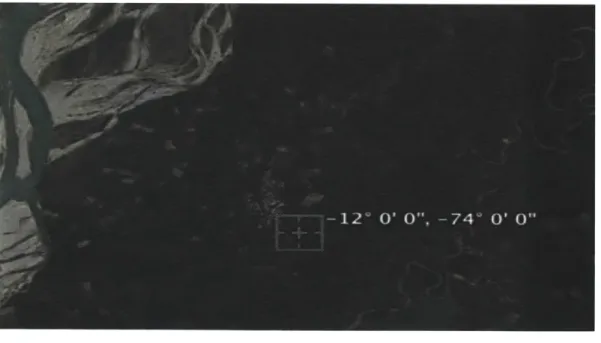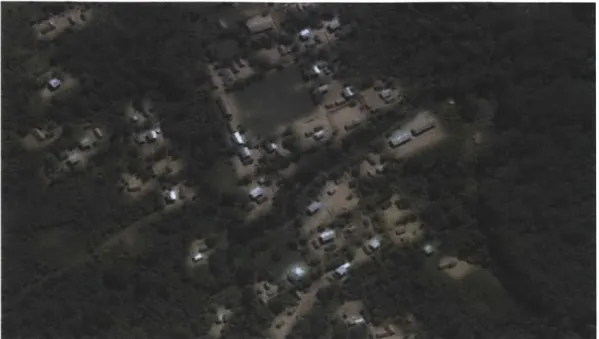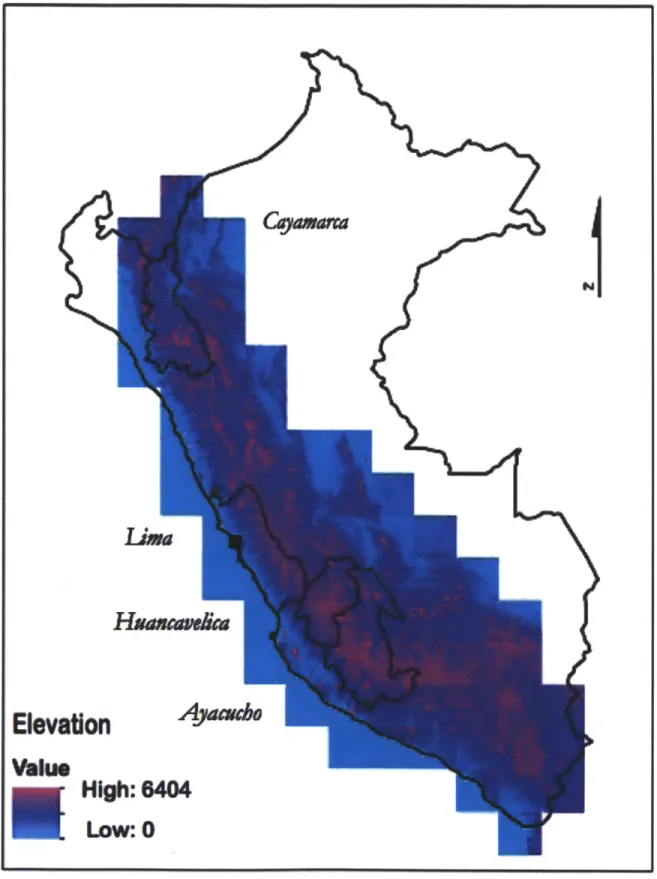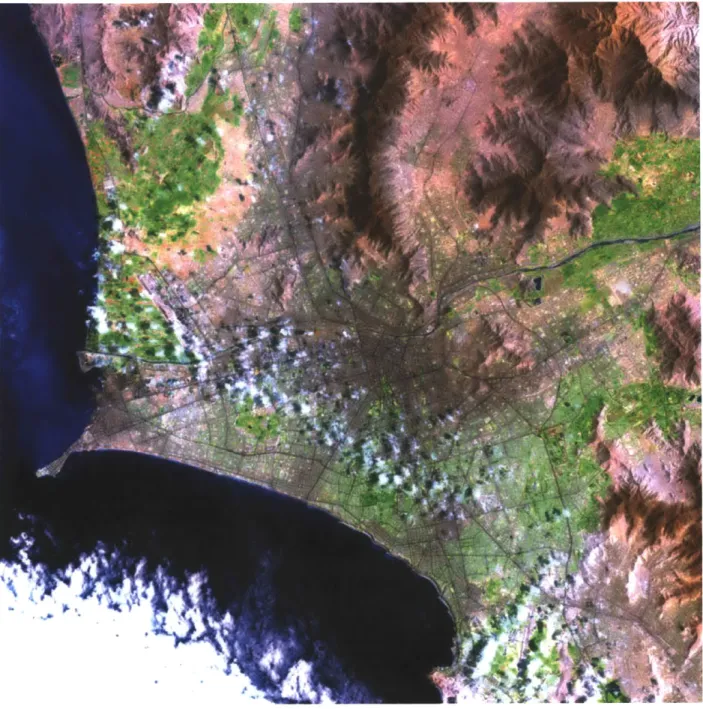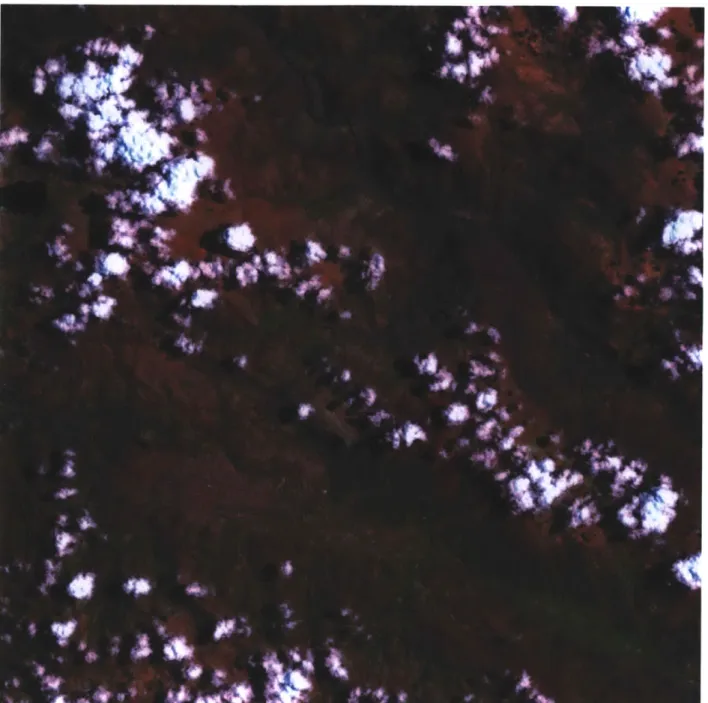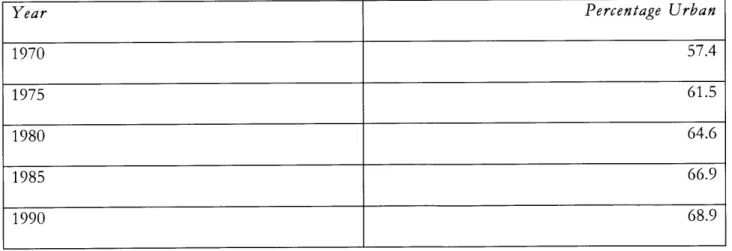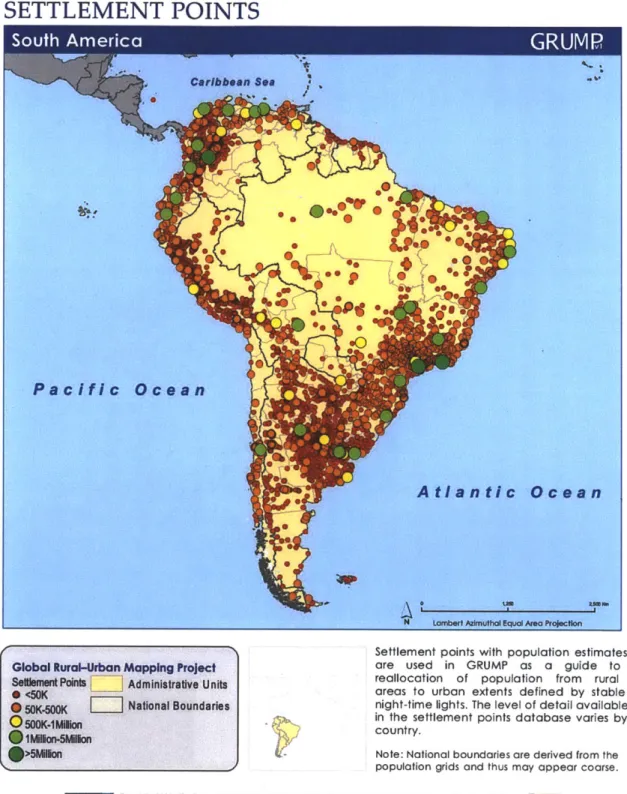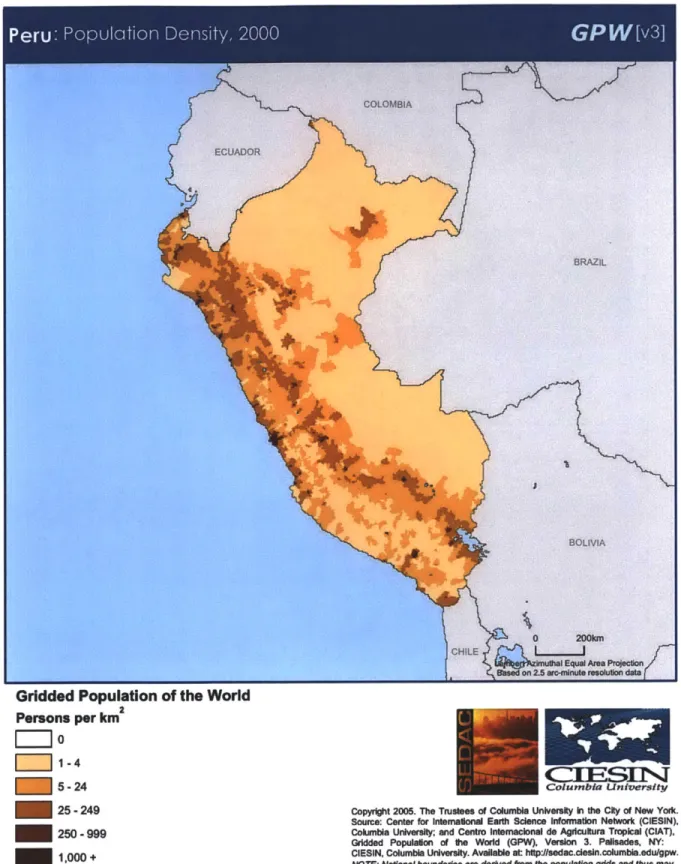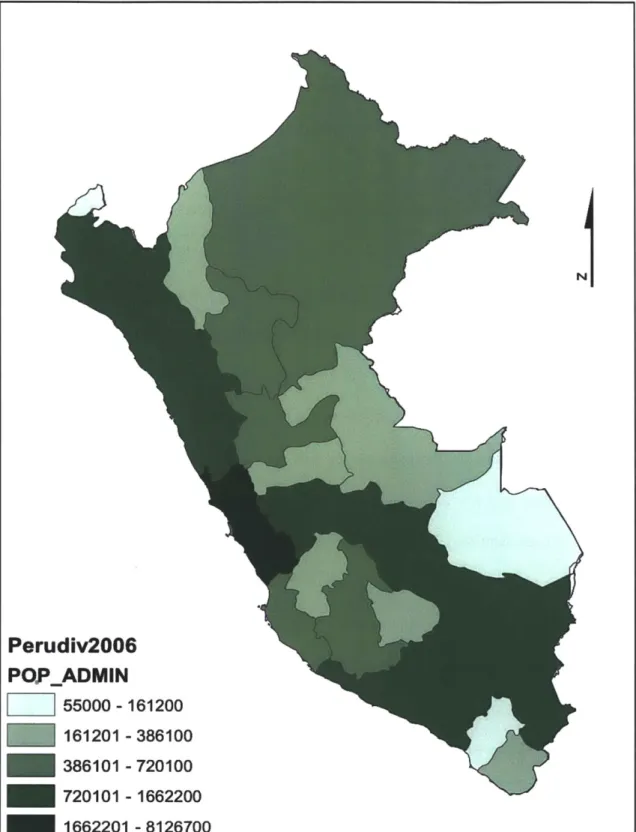Assessing Guerrilla Doctrine:
Battlefield Lessons on Network Structure and Multi-Front Insurgency
By Joseph Ovid Adams
B.A., University of California at Los Angeles (2008) Submitted to the Department of Political Science in partial fulfillment of the requirements for the degree of
MASSACHUSETTS INSTITUTE
OF TECHNAOLOGY
OCT 3 1 2011
LIBRA
RIES
ARCHIVES
Master of Science in Political Scienceat the
Massachusetts Institute of Technology September 7, 2011
© 2011 Joseph Ovid Adams. All rights reserved.
The author hereby grants to MIT permission to reproduce and distribute publicly paper and electronic copies of this thesis document in whole or in part in any medium now known or hereafter
created.
Signature of Author
Department of Politica cience September , 011
Certified by
IFotini Christia Assistant Professor of Political Science Thesis Supervisor
Accepted by
Roger Petersen Arthur and Ruth Sloan Professor of Political Science Chair, Graduate Program Committee
Assessing Guerrilla Doctrine:
Battlefield Lessons on Network Structure and Multi-Front Insurgency
Submitted to the Department of Political Science on September 7, 2011 in partial fulfillment of the requirements for the Degree of Master of Science in Political Science
By Joseph Ovid Adams
Abstract
This thesis will assess influential guerrilla doctrine advising optimal insurgent (1) operational environment, (2) organizational structure, (3) logistical capacity, and (4) dependent tactics - items of consistent, yet incomplete analysis in counter-insurgency (COIN) analytics and civil war scholarship. Following a review of five of the most infamously disseminated guerrilla doctrine and training manuals, this thesis derives a model of advised guerrilla war production. The derived model illustrating the strategic and operational principles of reviewed doctrine presents an organizational hybrid between guerrilla hierarchies and networks, positing optimal organizational structure as a function of operational environment. Logistical capacity, tactics, target set, and military classification are in turn best determined by organizational structure. An otherwise unobserved operational dynamic relating each of the above four enumerated strategic considerations is thereby illustrated, with implications for COIN theory and praxis.
To present a more systematic evaluation of reviewed guerrilla doctrine, the derived model is evaluated against a qualitative case-study of Peru's Shining Path insurgency. Case-study empirics are drawn from the
Uppsala/PRIO Armed Conflicts Dataset (ACD) on dyadic conflict (Cederman, Min, Wimmer 2010), Arc Geographic Information Systems (GIS) spatial analysis software, declassified Peruvian intelligence reports, and captured Shining Path documents and directives from the Peruvian insurrection between 1969 - 1989.
This study finds that evaluated guerrilla doctrine accurately reflects the material conditions of insurgency. There is one caveat: The global trends of increasing urbanization, dissolution of state power, and decline in politically motivated insurgency, may contribute to an observed shift in non-state actor war production from rural to increasingly urban and civilian-centric economies of violence. Lessons on strategically important considerations like sanctuary, terrain, state capacity, network evolution, and weapons proliferation, attend.
Key Words: doctrine, guerrilla, operational environment, network structure, rural, tactics, urban
Thesis supervisor: Fotini Christia
Contents
i. Abbreviations 5
ii. Acknowledgements 6
iii. Introduction: Composition, Findings, and Contributions 7
I. Review: Literature, Definitions, Data, and Scope 11
1.1. Literature: Missed Connections 11
1.2. Definitions: Insurgents, Guerrillas, Terrorists, CT or COIN 18
1.3. Data: Sources and Tools 26
1.4. Scope: Terrorism, Insurgency, Global Trends, and Case Study 26 II. Guerrilla Doctrine: Network Structure and Multi-Front Insurgency 32
11.1. Operational Environment 33
11.2. Organizational Structure 38
11.3. Logistical Capacity, Dependent Tactics, and Military Classification 42 11.4. Battlefield Lessons: Network Structure and Multi-Front Insurgency 46
III. Model: Mapping Guerrilla Doctrine 50
111.1. Modeling Front and Organization 50
111.2. Additional Dependent Variables 54
111.3. Complementary Model 56
111.4. Global Trends, Model Hypotheses, Discussion 59
IV. Case Study: Peru's Sendero Luminoso 64
IV.1. Origins: Doctrine, Organization, and Phased Guerrilla War 65
IV.2. Independent Variable: Phase I-III Operational Environments 71
IV.4. Relevance of Guerrilla Doctrine and Derived Models 91
V. Conclusion: Summary and Implications 94
V.1. Summary 94
V.2. Implications 96
VI. Figures, Models, Tables, and Appendices
Figure 1.2.1: Moving Beyond Binaries to a Spectrum of Participation 19
Model 3.1.1: Modeling Operational Environment and Hierarchy 51
Model 3.3.1: Modeling Government Control and Hierarchy 58
Figure 3.4.1: Review of Cases Applicable to Model 3.1.1 and 3.3.1 61
Figure 4.2.1: Initial Base of SL Mobilization: Ayacucho Rural Settlements 71
Figure 4.2.2: Detail of Ayacucho Rural Settlements 72
Figure 4.2.3: ArcGIS: Mapping Report 17-DPE on Phase I-III Zones 74 Figure 4.2.4: Satellite Imagery of Urban Lima and Surrounding Highlands 76
Figure 4.2.5: Satellite Imagery of Rural Cuzco and Surrounding Highlands 77
Table 4.2.1: Percentage of Urban Population in Peru 79
Figure 4.2.6: GRUMP: Macrocephalic Lima 80
Figure 4.2.7: Population Density in Peru, Coinciding Largely with Terrain 81
Figure 4.2.8: ArcGIS: Mapping Population Density in Peru by Province 82
Table 4.3.1: Intelligence Citing SL Urban Force Structure 88
Appendix I: Tables of Advised Rural and Urban Guerrilla Force Structures 101
Abbreviations
ACD: Uppsala/PRIO Armed Conflicts Dataset CCN: Civilian-Centric Network
BAS: Beginning of Armed Struggle COIN: Counter-Insurgency
CPP: Communist Party of Peru
CRH: Comit Regional de Alto Huallaga, or Regional Committee of the High Huallaga
CT: Counter-Terrorism
DIRCOTE: Direccidn Contra el Terrorismo, or the Counter-Terrorism Directorate ELP Ejercito Popular de Liberacidn, or Popular Liberation Army
FR: Fraccin Roja, or Red Faction
GICM: Groupe Islamique Combattant Marocain, or Moroccan Islamic Combat Group
GIS: Geographic Information Systems
GPW: Gridded Population of the World GRUMP: Global Rural-Urban Mapping Project
HAMAS: Harakat al-Muqawamah al-'Islamiyyah, or the Islamic Resistance Movement HTML: Hypertext Markup Language
IED: Improvised Explosive Device
NASA: National Aeronautics and Space Administration NIS: National Intelligence Service
NCBR: Nuclear, Chemical, Biological, Radiological SL: Sendero Luminoso, or Shining Path
Acknowledgements
I would like to thank Alberto Bolivar and Patricia Vargas for their encouragement and advice. To
my parents, Victor and Mercedes Adams, I am forever grateful for your guidance and support. Professors Marc Trachtenberg, Ismail Poonawala, and Stephen Van Evera, Assistant Professor Peter Krause, and Drs. Max Abrahms, Mac Bunyanunda, and Dris Soulimani, you helped me achieve my goal of receiving a graduate education. Professor Roger Petersen, Assistant Professors Fotini Christia and Vipin Narang, and graduate administrator Susan Twarog, thank you for your confidence, counsel, and for graciously allowing me the flexibility to complete my thesis while pursuing Arabic studies abroad.
i.
Introduction: Composition, Findings, and Contributions
Practitioners and scholars of COIN often debate the effects of operational environment, network structure, logistical capacity, and tactics on the ability of violent non-state actors to initiate and sustain insurgency. What guerrilla theoreticians say themselves, however, on fundamental strategic considerations like front and organization, is rarely cited. This thesis will accordingly assess the strategic and operational value of influential guerrilla doctrine, infamously proliferated in print and HTML, while addressing the failure of COIN and civil war scholarship to fully illuminate the relationship between guerrilla operational environment and organizational structure. Yet how useful is guerrilla doctrine, often labeled the work of unsound minds, to the student and practitioner of COIN? What can it tell us about the organization and evolution of guerrilla networks, and asymmetric conflict today?
This thesis attempts a threefold response. First, a survey of five of the most influential guerrilla manuals in the history of modem insurgency is presented.' Invariably, the theoretician's aim is to advise his cadre on how to best organize and effectively prosecute guerrilla war against a superior force. As such advised strategy and tactics bear a striking similarity across a
heterogeneous sample of major asymmetric violent conflicts, representing a scholarly continuum of insurgent thought developed, tested, and refined over decades. As in COIN scholarship, four interacting strategic considerations are consistently emphasized by guerrilla theoreticians,
namely: (1) operational environment, (2) organizational structure, (3) logistical capacity, and (4) dependent tactics. Particular attention is given to guerrilla organizations, as they are conceived and optimized to fight in distinct urban and/or rural theatres.
1 "On Guerrilla Warfare" (Tse-Tung 1937); "Philosophy of the Urban Guerrilla" (Guill6n 1966); "Guerrilla Warfare" (Guevara 1969); "Mini-Manual of the Urban Guerrilla" (Marighella 1971); and "A Practical Course for Guerrilla War" (al-Muqrin ca. 2004). A rationale for manual selection is presented in section II.
Second, to advance a more rigorous evaluation of influential guerrilla doctrine, this thesis derives a model illustrating the underlying operational dynamic relating each of the above four enumerated strategic considerations. To this end, the essential material constraint of operational environment is first identified and selected as an independent variable. A model illustrating how the independent variable of operational environment affects the dependent variables of
organizational structure, logistical capacity, and military classification, is subsequently derived. This model presents a fluid spectrum of guerrilla organization, positing optimal organizational structure as a function of operational environment. Tactics, target set, and military classification are in turn best determined by network structure. An operational dynamic relating insurgent front and organization -otherwise unobserved in COIN analytics and civil war scholarship- is thus illustrated, with lessons on how guerrilla networks do and will evolve across multiple operational environments in rural and/or urban theatres.
Third, this thesis examines the validity of its derived model against a case study review of one of the most successful guerrilla organizations in modern history: Peru's Sendero Luminoso, or Shining Path (henceforth SL). Case-study empirics on approximate conflict location, onset, duration, and termination are drawn from the Uppsala/PRIO Armed Conflicts Dataset (ACD) on dyadic conflict (Cederman, Min, Wimmer 2010). To determine the external validity of guerrilla doctrine reviewed and modeled in this thesis, captured SL documents and directives from the Peruvian insurrection between 1969 - 1989, and secondary-source literature documenting SL
organizational evolution and areas of operation are assessed against terrain, topography, and population maps generated through ArcGIS spatial analysis software. It is subsequently determined that evaluated guerrilla doctrine accurately reflects battlefield conditions. The modeled operational dynamic relating insurgent front and organization, as detailed in reviewed
guerrilla doctrine, is also observed. The global trends of increasing urbanization, dissolution of state power, and decline in politically motivated non-state actor violence may, however,
contribute to an increase in typically rare urban guerrilla war.2
This thesis makes four contributions to the field of insurgency studies. First, it confirms the strategic and operational value of influential guerrilla doctrine. Second, guerrilla field manuals are reviewed and evaluated not in isolation, but as belonging to a rich, parallel dialogue the COIN scholar and practitioner would do well to consider. Third, by modeling the underlying operational dynamic relating optimal insurgent (1) operational environment, (2) organizational structure, (3) logistical capacity, and (4) dependent tactics, this thesis highlights the fundamental variable of operational environment, and by extension, sanctuary. As will be discussed, an
appreciation of the organizational salience of guerrilla sanctuary, and the mediums that provide it -physical or otherwise- is essential to understanding and predicting past, current, and future modes of insurgent mobilization. Fourth, a shift toward urbanized, apolitical modes of guerrilla organization and violence, is identified, and suggested as an avenue for future research.
The remainder of this paper will proceed in five sections. The first section will provide a literature and data review, and define working definitions and analytical scope. The second section will review relevant guerrilla doctrine vis-i-vis optimal network organization and choice of tactics as a function of theatre. The third section will provide a model, derived from reviewed manuals and data presented in Section I & II, of the relationship between operational
environment, organizational structure, and dependent logistical capacity. The implications of this model with regard to guerrilla military classification, as determined by tactics, will also be
2 Although a study of relevant global trends is beyond the scope of this thesis, increasing, likely unsustainable
urbanization, exacerbating state security and services provision, will be considered. For an in-depth look at some of the challenges of 21st century urban governance, see "Governance in the 21st Century." Organization for Economic Cooperation and Development (OECD), 2001. http://www.oecd.org/dataoecd/15/0/17394484.pdf
considered. The fourth section will present a case study of SL, evaluating the external validity of models derived in Section 1II. The fifth section concludes with a summary and policy
implications. Appendix I provides advised guerrilla force structures. Appendix II lists a universe of identified insurgencies (Fearon and Laitin 2006).3
3 Fearon, James and David Laitin. Additional Tablesfor Ethnicity, Insurgeng, and Civil War. Department of Political Science,
I.
Review: Literature, Definitions, Data, and Scope
This section will review COIN and civil war literature examining guerrilla operational environment, organizational structure, logistical capacity, and dependent tactics. Working definitions, study scope, and case-study datasets will also be presented. Following a review of
COIN and civil war scholarship, it seems a complex operational dynamic relating insurgent front
and network structure remains unexplored. Relevant guerrilla doctrine may thus be illuminating.
1.1. Literature: Missed Connections
Operational Environment
To say that insurgent operational environment, organizational structure, logistical capacity, and dependent tactics, are variables meriting equal consideration, absent any implicit hierarchy, is inaccurate. Operational environment is of principal study and emphasis in civil war scholarship and guerrilla theory alike. This is because systemic, ethno-geographic variables such as terrain, government control, ethno-linguistic fractionalization, and distance from capital -variables largely defining insurgent operational environment- are widely acknowledged to influence, even determine the capacity of violent non-state actors to initiate and sustain insurgency.4
As such extant civil war scholarship presents a series of studies on the relationship between non-state actor modes of war production and the relative effects of distinct operational environments (Fearon and Laitin 2003; Collier and Hoeffler 2004; Cederman and Girardin 2007;
4 It is for this reason that operational environment will be selected as the to-be-presented model's independent variable.
Buhaug, Cederman, and Rod 2008; Cederman, Girardin, and Gleditsch 2009).5 Of particular interest is research on the systemic variable of terrain, which advances an observed distinction between rural and urban models of asymmetric conflict. Influential scholarship posits rural
sanctuary, and rough, especially mountainous terrain, limiting state control and services, as essential for initiating and sustaining rebellion (Lemke 1995; Kalyvas 2006).6 New work challenges this assumption, citing overlooked examples of protracted urban violence and insurgency (Rodgers 2007; Staniland 2010).7
Although scholarship exploring the perceived divide between rural and urban guerrilla war illuminates the essential variable of operational environment, and establishes an implicit link between theatre and organizational capacity, it fails to identify a more complex relationship between front and organization and its corresponding effect on civil war onset and duration. Case study guerrilla mobilization and dependent tactics are for example presented as definite models
s For each, see Fearon, James D. "Ethnic and Cultural Diversity by Country." Journal ofEconomic Growth 8(2). 2003, pp.
195-222; Collier, Paul, and Anke Hoeffler. "Greed and Grievance in Civil Wars." Oxford Economic Papers 56(4). 2004, pp. 563-95; Cederman, Lars-Erik, and Luc Girardin. "Beyond Fractionalization: Mapping Ethnicity Onto Nationalist
Insurgencies." American Political Science Review 101 (1). 2007, pp. 173-85; Buhaug, Halvard, Lars-Erik Cederman, and Jan-Ketil Rod. "Disaggregating Ethno Nationalist Civil Wars: A Dyadic Test of Exclusion Theory." International Organization
62(3). 2008, pp. 531-51; Cederman, Lars-Erik, Halvard Buhaug, and Jan-Ketil Rod. "Ethno-nationalist Dyads and Civil
War: A GIS-based Analysis." Journal of Conflict Resolution 53(4). 2009, pp. 569-525.
6 Prominent civil war scholar Stathis Kalyvas notes the salience of terrain with regard to exercising population control -a strategic concept central to the fundamental task of gathering accurate intelligence necessary to effectively apply selective violence. Kalyvas, Stathis N. The Logic of Violence in Civil War. Cambridge University Press. 2006, pp. 132-133. On the limiting effects of mountainous terrain, see Lemke, Douglas. 'The Tyranny of Distance: Redefining Relevant Dyads',
International Interactions 21(1). 1995, pp. 23-38.
7 Noting a critical shift in the political economy of violence in Latin America from "political" to "social" violence, Senior Fellow Dennis Rodgers at the London School of Economics examines urban violence in Nicaragua as representative of a paradigm shift from politically motivated violence and insurrection, to rent motivated, apolitical, urban war production. Rodgers however focuses on apolitical criminal networks, rather than the politically motivated rebel organizations that are the focus of this thesis. Work by Professor Paul Staniland at the University of Chicago is more relevant to our purposes. Citing, for example, the rise of insurgency in Karachi from 1978 to 1996 in "Cities On Fire: Social
Mobilization, State Policy, and Urban Insurgency," Staniland is more or less at odds with Kalyvas' notion that it is rural, rather than urban operational environments, that are most likely to serve as a base for guerrilla insurgency. Staniland, however, provides an important caveat: urban centers are as likely as rural hinterlands to give rise to guerrilla
insurgencies provided incumbent governments are somehow limited in the level of violence they may expect to apply. As will be noted, this observation complements the basic findings of this thesis. For when cities burn, see Staniland, Paul. "Cities on Fire: Social Mobilization, State Policy, and Urban Insurgency." Journal of Comparative Politics, 2010. On slum wars, see Rodgers, Dennis. "Slum Wars of the 21st Century: Gangs, Mano Dura, and the New Urban Geography of Conflict in Central
of non-state actor violence, often removed from a more fluid spectrum of organizational patterns determined by the material constraints of battlefields within or across examples of urban and/or rural asymmetric conflict. Guerrillas do not, however, limit war to the operational dichotomy of rural or urban. They fight across multiple fronts, with organizational patterns of varying
logistical efficiency optimized for mission and theatre.
It would stand to reason that the material constraints of distinct operational environments, often shifting longitudinally across a campaign in both time and space, may affect the
organizational sophistication and corresponding capacity of a guerrilla organization to initiate and sustain insurgency.8 Civil war onset and duration may thus be linked to the impact of
operational environment on successful guerrilla mobilization and organization. A more inclusive model of the relationship between the operational environment and organizational structure of violent non-state actors, is however lacking.
Organizational Structure
The question of participation is fundamental to an understanding of guerrilla mobilization -what motivates men and women to rebel, and to what degree of participation and organization? COIN and civil war scholarship has accordingly moved from binary modes of guerrilla participation (Berdal, Mats and Malone 2000; Collier and Hoeffler 2004),9 to a range of organizational
8 For example, the material constraints of distinct operational environments may shift as a nation moves from predominantly rural to urban-centric economies and demographics (time), and from the rural periphery to the urban center (space).
9 Guerrilla motivation and participation in COIN literature were initially limited to "greed" or "grievance," with the
would-be fighter deciding to either "rebel" or "not rebel." Although useful for microeconomic modeling, this limitation of the human decision making process and available range of social roles to a more tractable binary obscures the complex web of systemic and individual mechanisms compelling men and women to commit and/or aid mass violence. On the greed or grievance debate, see Berdal, Mats, and Malone. Greed and Grievance: Economic Agendas in Civil Wars. Boulder: Lynne Rienner Publishers, 2000. Also: Collier and Hoeffler. "Greed and Grievance in Civil War." Oxford Economic Papers 56. 2004, pp. 563-595. On the tendency in civil war scholarship to limit guerrilla participation in guerrilla
involvement considering multiple, micro-mechanisms triggering action (Petersen 2001; Lindsey and Petersen 2011).10 This new focus in civil war studies at once offers a more nuanced theory of insurgency, specifying a spectrum of organizational participation, while shifting the unit of analysis from nations, to individuals.
Despite new research exploring individual participation in insurgency, less is said on the intermediary of the cooperative, as recorded by insurgent theoreticians themselves." Counter-insurgents fight as a group, and according to doctrine specifying strategy and procedure
(Petraeus et al. 2006).12 Unsurprisingly, so do insurgents. Work on individuals is important, but men rarely fight alone, and less so effectively. They fight as dynamic organizations, evolving
war to a simple binary, see Petersen, Roger. Resistance and Rebellion: Lessonsfrom Eastern Europe. Cambridge University Press, 2001, p. 8.
10 Petersen (2001) moves from the binary "to rebel" or "not rebel," to a spectrum of individual participation moving from -3 (full military commitment to the rebel cause), to +3 (full military commitment to the incumbent cause), with degrees of individual involvement in between (-2, 2 [strong]; -1, 1 [weak]; 0 [neutral]). At each stage, mechanisms motivating or dissuading of movement along the conflict spectrum are specified. Lindsey and Petersen (2011) provide a similar spectrum of Iraqi insurgent involvement between 2006-2007. COIN strategy targeting systemic and individual factors motivating escalation in participation is subsequently identified. The above noted spectrum of insurgent
involvement considering multiple mechanisms triggering action will be revisited when presenting a working definition of insurgency and a description of SL graduated force structure. On graduated insurgent participation, see Petersen, Roger. Resistance and Rebellion: Lessonsfrom Eastern Europe. Cambridge University Press. 2001, pp. 8-9. For an application of Petersen's spectrum of insurgent participation to COIN theatres in Iraq, see Lindsey, John, and Roger Petersen. Varieties of Counterinsurgency: A Case Study of Iraq. Newport: Naval War College, 2011.
" There are notable exceptions. On guerrilla theory, a short review of al-Qa'ida doctrine is attempted by the former head of the CIA's now defunct Bin Laden Unit Dr. Michael Scheuer. Scheuer, valuably, notes the regimental, group fighting of violent non-state actors like al-Qa'ida. On organization, there are two notable examples: First, the recent spate of work studying the post-9/11 phenomenon of decentralized terrorist networks. Second, COIN analytics assessing guerrilla movements consistently emphasize the organization -rather than the individual or nation- as the fundamental fighting unit. The former is however more focused on civilian-centric terrorist organizations, while the latter has yet to fully penetrate academia. On Sheuer's review of al-Qa'ida doctrine, see Scheuer, Michael. "Al-Qaeda's Insurgency Doctrine: Aiming for a 'Long War'." Terronsm Focus 3(8). 2006. On networks, see John Arquilla and David Ronfeldt. "Networks and Netwars: The Future of Terror, Crime, and Militancy. " RAND. 2001; From Pablo to Osama: Traficking and Terrorist Networks, Government Bureaucracies, and Competitive Adaptation. University Park: Penn State University Press. 2007; Sageman, Michael. "Understanding Terror Networks." Philadelphia: University of Pennsylvania Press. 2004. On COIN analytics considering organizations as the principal unit of analysis during the Cold and Long Wars, see Molnar, Andrew. "Human Factors Considerations of Undergrounds in Insurgencies." Department of the Army. 1966.
http://www.cgsc.edu/carl/docrepository/dapam550_104insurgencies.pdf; and Hammidov, Bakhtiyorjon. "The Fall of the Taliban Regime and its Recovery as an Insurgent Movement in Afghanistan." U.S. Army Command and General Staff College. 2004, http://www.dtic.mil/cgi-bin/GetTRDoc?AD=ADA428904.
12 The 2006 Army and Marine Corps counter-insurgency manual FM-34 represents the first revisal of Army and Marine Corps counter-insurgent doctrine in more than two decades. The essential message of FM-34 is to "learn and adapt the ideas from the manual to their particular location and enemy." With a focus on doctrinal development and distribution, and tactical evolution as a function of enemy organization, FM-34 illustrates the strategic value of defined procedure, and organizational flexibility necessary to defeat a nimble enemy. Petraeus, David H., and James F. Amos. "FM-34: Counterinsurgency." Headquarters Department of the Army. 2006.
with mission, environment, and opponent, with observable implications for expected tactics, targets, and fields of operation (Randy and Gelles 2005; Binder, Gelvin, and Rapoport 201 1).13
Recent scholarship does consider insurgency at the organizational-unit of analysis; however, most is best associated with post-9/1 1 work on civilian-centric terrorist networks
(CCN) (Arquilla and Ronfeldt 2002 et al.).14 CCN -although often deployed by larger parent
organizations in hazardous operational environments- are different from hierarchical, military-centric groups. The consequences of not appreciating this organizational distinction, and environmental factors driving organizational evolution, dependent tactical innovation, and military classification, are considered below.
Logistical Capacity, Dependent Tactics, and Military Classification
If guerrillas fight largely as organizations, fit to field and objective, what does this mean for
13 The organizational evolution of al-Qa'ida from a centralized, anti-Soviet insurgent organization, to a post-9/1 1,
decentralized network, is a subject of much scholarship. Academics seek macro and micro-mechanisms prompting organizational evolution, while COIN practitioners try to stay one step ahead of a dynamic and dangerous target. Pre and post-9/11 al-Qa'ida's record of organizational and tactical innovation across multiple rural and urban guerrilla fronts is, for example, compelling evidence. Notably, organizational evolution is often accompanied by dependent tactical innovation. One example is the use of Explosively Formed Penetrator (EFP) Improvised Explosive Devices (IED) by guerrilla combat units countering US armor in Iraq and Afghanistan. Upon detonation, an EFP with a 20 cm (8 in)
penetrator lens can throw a -3 kg slug of molten copper at ~2,000 m/s, producing ~60 times the kinetic energy of a .50 BMG round. EFP IED slugs are capable of penetrating 10.2 cm of armor at 90 m. The portable Iranian-made Shawaz EFP IED used by HAMAS against Israeli vehicles, for example, is reported to be capable of penetrating 20.3 cm of steel. EFP IED were used extensively by al-Qa'ida and Saddamist insurgents during the Third Gulf War. On EFP IED general construction and use, see Burton, Fred. "The Imminent Spread of EFPs ." Straford.
http://www.stratfor.com/imminent..spread-efps. For Army estimates of EFP penetration, see EFP: Explosively Formed Penetrators. CNN. On the HAMAS Shawaz EFP IED, see ShawaZ. United States Army Combined Arms Center. http://usacac.army.mil/cac2/call/thesaurus/toc.asp?id=346 9 6. On EFP projectile velocities, weights, and lens manufacture, see Atkinson, Rick. "Left of Boom." Washington Post. 2007, p. 11.
http://www.scribd.com/doc/46013675/LEFT-of-BOOM-PT-2. For an overview of pre and post-9/11 operational evolution, see Borum, Randy, and Michael Gelles. "Al-Qaeda's Operational Evolution: Behavioral and Organizational Perspectives." Behavioral Sciences and the Law. 2005, pp. 467-483. For a brief on post-Bin Laden al-Qa'ida, see University of California at Los Angeles (UCLA) news room video brief Al-Qaeda After Bin-Laden, with UCLA professors Leonard Binder, James Gelvin, and David Rapoport. http: / /newsroom.ucla.edu/portal/ucla/news-week-al-qaeda-after-bin-laden-202606.aspx.
14 For additional work on networks, see John Arquilla and David Ronfeldt. "Networks and Netwars: The Future of
Terror, Crime, and Militancy." RAND. 2001; From Pablo to Osama: Trafficking and Terrorist Networks, Government Bureaucracies, and Competitive Adaptation. University Park: Penn State University Press, 2007; Sageman, Michael. "Understanding Terror Networks." Philadelphia: University of Pennsylvania Press, 2004.
logistical capacity and dependent tactics -seemingly important, material considerations, influencing the muddled military classifications insurgent, guerrilla, and terrorist? Work on networks does consider the relationship between organizational evolution and logistical capacity. It is for example understood that low network interconnectivity caused by cell
compartmentalization limits the logistical capacity of violent non-state actors lacking men and support (Enders and Su 2007)."1 What is less studied is how a drop in logistical efficiency caused
by network evolution toward more compartmentalized models of organization affects feasible
tactics and corresponding target set -may less logistically capable units necessarily gravitate to soft-target, civilian-centric tactics?
That a military classification of terrorism may lie with organizational rather than tactics-based determinants, however, is unexplored. A conflation of military classification, as
determined by tactics, follows. Due to a primary or secondary employed tactic of terrorism, CCN are often aggregated with distinct, military-centric guerrilla organizations (Hoffman 1999; Abrahms 2004).16 And this is not an academic exercise -military classification matters. Policy
15 Enders and Su's work on rational network response to counter-terrorist infiltration efforts will form an important component of the urban guerrilla force structure analysis presented in this thesis. Enders, Walters, and Xuejuan Su. "Rational Terrorists and Optimal Network Structure." Journal of Conflict Resolution 51(1). 2007, pp. 33-57.
16 Although a discussion of scholarship on CCN is best considered on sub-section "organizational structure," it is included here to demonstrate how a given violent non-state actor's choice of tactics -irrespective of other, more broad organizational determinants, e.g. horizontally organized networks vs. hierarchical guerrilla armies- may result in a misleading military classification, and corresponding recommendation of sub-optimal responsive tactics. For example, following a review of several successful terrorist campaigns, Hoffman concludes "terrorism works." Yet Hoffman's case studies seem to describe urban insurgencies (FLN in Algeria, EOKA in Cyprus, and the Irgun in Palestine), rather than
CCN. Hoffman may be assigning success to urban insurgencies using terrorist tactics. As such, perhaps Hoffman should have
concluded his historical overview with the less ambitious "terrorism, as a tactic, can work." In "Why Terrorism Does Not Work," terrorism scholar Max Abrahms challenges the conventional wisdom that terrorism is an effective coercive strategy. Analyzing the armed struggles of twenty-eight terrorist organizations -the complete list of foreign terrorist organizations as designated by the US Department of State since 2001- Abrahms finds that terrorists only accomplish first-order strategic objectives 7% of the time. Yet although Abrahms holds an opposing view to Hoffman on the relative utility of terrorism as a coercive tactic, his analysis is plagued by the same definitional problem: rather than confound urban insurgents with CCN, as Hoffman had, Abrahms confuses CCN with urban insurgents. Throughout his analysis, Abrahms relies on the State Department's list of foreign terrorist organizations. The State Department makes no distinction between primarily insurgent/quasi-political organizations that capture and control territory (e.g.
Hezbollah), and the civilian-centric terrorist organizations (e.g. post-9/11 al-Qa'ida) he claims to analyze. For Hoffman's review of successful terrorist campaigns, see Hoffman, Bruce. Inside Terrorism. New York: Colombia University Press,
makers may otherwise counter the wrong target, with the wrong strategy (Cronin 2011).17 As will be further discussed in the proceeding pages, COIN and counter-terrorism (CT) may be considered different models of warfare, with divergent -even antagonistic- strategic assumptions, objectives, methods, and tactics (Boyle 2010)."
Missed Connections
The effects of operational environment on the organizational and logistical capacity of guerrillas to initiate and sustain insurgency is widely recognized; that guerrillas need sanctuary to
effectively contest state power is a truism. Precisely why and how different operational environments affect insurgent fighting ability, however, remains unexplained. Is it simply a question of state capacity to punish insurgents over rough physical and/or human terrain? Or, since guerrillas fight in groups, are there other, material constraints imposed by distinct operational environments on the capacity of guerrillas to effectively organize and wage war? What would this mean for feasible guerrilla logistics and tactics, and, correspondingly, how the counter-insurgent identifies, targets, and counters his enemy?
There thus seems to be a complex, yet understudied material dynamic relating insurgent operational environment, and organization, with material implications for logistical capacity and feasible tactics. A model of this dynamic may provide the counter-insurgent and policy maker with a more accurate understanding of how systemic conditions influence guerrilla
organizational evolution. Distinct organizational patterns may in turn affect COIN responsive
1998, ch. 1,2. For Abrahms on the effectiveness of terrorism, see Max Abrahms, "Why Terrorism Does Not Work," InternationalSecuriy, 31(2). 2006, pp. 42-78.
17 Cronin, A.K. How Terrorism Ends: Understanding the Decline and Demise of Terrorist Campaigns. New Jersey: Princeton University Press, 2011.
18 MichaelJ. Boyle, "Do Counter-Terrorism and Counter-Insurgency Go Together?," International Affairs 86(2). 2010, pp. 334-353.
strategy and tactics. We have seen what COIN and civil war scholarship have to say about the relationship between insurgent front and organization. But what do the guerrilla fighter and
theoretician think?
Together with the counter-insurgent, the guerrilla fighter and theoretician are, after all, the actors most affected by the material constraints of asymmetric battle. Guerrilla doctrine -what may indeed represent a useful, parallel academic discussion, considering decidedly operational, material battlefield constraints- may therefore be of use to the counter-insurgent. This thesis will see to what extent, while shedding light on how guerrillas organize and fight as a function of theatre.
1.2. Definitions: Insurgents, Guerrillas, Terrorists, CT or COIN, Terminology
Insurgents, Guerrillas, and Terrorists
One objective of this thesis is to distinguish between the oft-confounded terms insurgent, guerrilla, and terrorist. The military classifications insurgent, guerrilla, and terrorist may be briefly defined, respectively, as (1) the passive, sympathetic, or logistically active member of a violent movement seeking to overthrow an existing social order through primarily military tactics; (2) the militarily active member of a violent movement seeking to overthrow an existing social order through primarily military tactics, and (3) the logistically or militarily active member of a relatively small civilian-centric organization seeking to overthrow an existing social order through primarily terrorist tactics.'9
19 For a brief overview of the Department of Defense distinction between insurgents, guerrillas, and terrorists, see US Military Academy training-manual document 'Insurgents vs. Guernillas vs. Terrorists" available at
With that, two important definitional determinants of the military classifications of insurgent, guerrilla, and terrorist, are apparent. They are (1) degree ofparticipation in insurgency, and (2) scale and sophistication of organization. We may now return to previous civil war scholarship advancing a spectrum of rebel participation in guerrilla war.2 0 Fig. 1.2.1,
and accompanying explanations provided below, reproduced with permission from Lindsey and Petersen (2011), additionally clarify the military classifications of "insurgent" and "guerrilla":
Fig. 1.2.1: Moving Beyond Binaries to a Spectrum of Particpation
Neutral (0): During any conflict between a government and its opponent, many individuals will
choose neutrality; these actors will try to avoid both sides and go about their daily lives with a minimum of risk. They will not willingly provide information or material support to either the government or the insurgents nor will they participate in public demonstrations for either side.
Unarmed, unorganized insurgent supporter (-1): While avoiding any armed role, some
individuals will occasionally provide information, shelter and material support for the insurgents. While unorganized, these individuals may show up at rallies supporting the insurgents and will boycott elections and other activities that could legitimize the government.
20 On insurgent organizational participation, see Petersen, Roger. Resistance and Rebellion: Lessonsfrom Eastern Europe. Cambridge University Press, 2001, and Lindsey, John, and Roger Petersen. "Varieties of Counterinsurgency: A Case Study of Iraq." Naval War College. 2011.
Armed local insurgent (-2): Some individuals will adopt a role of direct and organized
participation in a locally based, armed organization. In the absence of a powerful state, individuals in this role often take the form of local militia members. In the presence of a powerful state, such individuals may appear as uninvolved citizens by day, but play the role of
active fighter at night. Even the most powerful states can have trouble identifying and neutralizing actors in this role.
Mobile armed insurgent (-3): Some individuals will join mobile and armed organizations,
becoming members in a guerrilla unit or rebel army. These individuals will fight outside of their own local communities.
These four roles form one side of a spectrum of participation. At the onset of an occupation or violent conflict, many individuals will begin at neutrality, but then move into a support role (-1), and then on into even more committed and violent roles (-2, -3). Of course, individuals may also move along a parallel set of roles in support of the government. These roles basically mirror those above.21
If we combine the previously proposed definitions of "insurgent" and "guerrilla," with
the above noted spectrum of insurgent involvement, we may place the "insurgent" at a (-1) -or possibly (-2), according to degree of participation in armed rebellion- with the "guerrilla" at (-3). As apparent, individuals at each stage of conflict participation may exist within an organization, or more broadly across a movement. As opposed to (-1) and (-2) insurgents, perpetrating local,
21 Lindsey, John, and Roger Petersen. Varieties of Counteinsurgency: A Case Study of Iraq. Newport: Naval War College, 2011.
opportunistic acts of guerrilla assistance and/or anti-government violence, fighters belonging to mobile urban cells and/or rural military units are (-3) guerrillas.2 2
Although the support and occasional armed role of the (-1) and (-2) insurgent will be noted when considering graduated guerrilla force structure, the primary focus of this thesis will be on the more organizationally active (-3) guerrilla. This thesis thus aims to build on previous work studying micro-level insurgent participation. Rather than individuals or larger movements, however, the unit of analysis will be guerrilla organizations, as they are doctrinally conceived,
and refined across distinct operational environments.2 3
22 This division between obstructive, but unarmed (-1) insurgents; lightly armed, but untrained, opportunistic, and local (-2) militia; and well armed, regimental, and mobile (-3) guerrillas, is usefully illustrated by US counter-sniping efforts in Iraq. Three classes of guerrilla snipers are described. First, the untrained "pot-shot sniper." This individual may not have even zeroed his own rifle, and may have got started "with as little as two hours instruction." Although fire from this first class of Iraqi sniper is only marginally effective, it is regularly concealed by obstructive (-1) insurgents reluctant to divulge information on sniper identities, or even acknowledge "having heard a shot." The cited study estimates this category "constitutes half the snipers in Iraq." Second, above the "pot-shot sniper," we find the "trained marksman." The "trained marksman" is likely a former military or sports shooter, who although a competent shot, lacks sniper training and experience. This second category is associated with the (-2) "opportunistic neighborhood sniper," who, operating mostly around where he lives, sees Americans as "a convenient, opportunistic target right in his own backyard." Often the "trained marksman" is operationally limited by optics and weaponry (Soviet-made 4x PSO-1 mounted to SVD Dragunov or Kalashnikov-derivative [e.g. Romanian PSL, Yugoslav M76, Iraqi Tabruk et al.] sniper rifles), and lacks an extensive support network. Last, above the (-1, -2) "pot-shot sniper," and (-2) "trained marksman," we find the (-3) "one shot one kill" sniper. The "one shot one kill" sniper is a fulltime guerrilla with competent, likely outside training and/or operational experience in Afghanistan, Chechnya, and other guerrilla fronts. This most dangerous category may capably target -and win against- Coalition forces. A number of tragically successful attacks against Coalition officers, Special Forces soldiers, and well-known sniper teams are described. As the above cited target set demonstrates, each attack required substantial preparation, intelligence, and skill to execute -a mark of the
organizational and logistical sophistication of third-tier (-3) guerrillas, capable of acquiring and fielding, for example, Austrian-made .50-caliber rifles (Steyr Model 50 HS) smuggled from Iran. Plaster, John. Counter-Snjping in Iraq. Paladin Press, 2006, chpt. 20.
23 It should be noted that insurgencies are best understood, and indeed often observed as broader movements, in which multiple organizations may participate. The Iraq insurgency during the Third Gulf War is representative, with distinct organizations like al-Qa'ida in the Land of Two Rivers (AQI), the Jaish al-Mahdi (JAM), and the Badr Organization, among others, participating in a wider popular insurgency. A comprehensive study of insurgency as a broader movement, rather than as comprised of distinct organizations, each meriting in-depth study, is best left to another analysis. For a taxonomy of Iraqi guerrilla organizations, see "Iraqi Insurgency Groups." Global Security.
http://www.globalsecurity.org/military/ops/iraqjinsurgency.htm. For work on insurgency both considering individual participation, and a more inclusive, popular phenomenon, see Petersen, Roger. Resistance and Rebellion: Lessonsfrom Eastern Europe. Cambridge University Press, 2001.
Although insurgency, defined as the violent contest between rebel and incumbent for complete or partial control of territory,24 is better defined, the concept of terrorism is notoriously
nebulous, with as many definitions as scholars and practitioners. However, several elements prevail across interpretations. Terrorism may be firstly understood as a fundamentally political project. The utility of an attack is only in its ability to exploitfear. That is, to inflict an
asymmetric psychological impact capable of forcing concessions from a captive audience. Terrorism, secondly, is essentially violent, with attacks, or threat thereof, primarily directed against unarmed civilians. For the purposes of this study, terrorism may be defined as a tactic, centering on the deliberate creation and exploitation of fear, through violence or threat of violence, directed primarily against unarmed civilians, in the pursuit of political change.2s
A word on the practitioner of terrorism is in order, with attention to scale and
sophistication of organization. Considered a weapon of the weak, terrorism is associated with small, often parasitic non-state actors lacking popular representation and power to affect systemic change. Although guerrilla armies also attack unarmed civilians to extract political concessions, the guerrilla, unlike the terrorist, operates as a military unit, attacks state military forces, and captures and holds territory.26 Terrorists, in contrast, avoid direct combat with state military units, and rarely hold sovereignty over territory.
24 This definition of insurgency is derived in part from Counter-insurgency Field Manual FM-34. An alternative
definition of insurgency, proposed by Fearon and Laitin (2003), characterizes the dominant type of civil war in the post-World War II era: "[Insurgency] is defined as a technology of military conflict characterized by small, lightly armed bands practicing guerrilla warfare from rural base areas." By specifying base of operations, Fearon and Laitin note the effect of environment on the initiation and successful prosecution of modern insurgency. For the FM-34 definition of insurgency, see Petraeus, David H., and James F. Amos. "FM-34: Counterinsurgency." Headquarters Department ofthe Army. 2006, pp. 1-4. For Fearon and Laitin, see Fearon, James D. and David D. Laitin, "Ethnicity, Insurgency, and Civil War," American Political Science Review, 97(1). 2003, p. 75.
25 This definition of terrorism is in part derived from Hoffman, Bruce. Inside Terrorism. New York: Colombia University
Press. 1998, p. 43.
26 The term "military unit" is deceptively parsimonious; it belies a spectrum of organization type, capability, and size.
This spectrum may begin with small rifle, mortar, and grenade teams, e.g. Somalia's as-Shubaab, and move toward logistically complex units capable of affecting asymmetric and even conventional warfare, using small and heavy arms, e.g. Lebanon's Hezbollah.
Thus employing a fundamentally asymmetric tactic, the practitioner of terrorism is likely a relatively weak, non-state entity, lacking the cadre and capacity to assemble and field more organizationally sophisticated and logistically capable units. Even at this more general definitional level, relying on distinctions rather than parsimonious definitions, a relationship between organizational sophistication, military classification, target choice, and tactics, is
apparent. This thesis will explore the doctrinal and operational relationship between each.
CT or COIN?
As this thesis does not equate insurgents and guerrillas with terrorists, it considers CT and COIN two separate models of warfare. To this end, COIN may be understood as a competition between counter-insurgents and insurgents for the loyalty of a population and control of or secession from the state. Given this definition, the primary strategic objective of COIN is to wrest insurgent political influence from the population, build the capacity of central and local governments, and eliminate subversive agents and influence.
As terrorist organizations are generally smaller than guerrilla armies and lack the military assets and popular support of an insurgency, the primary strategic objective of CT, in contrast, is cell penetration and network dissolution, with minimal concern as to long-term population-centric efforts important to COIN. As the counter-terrorist is not facing an enemy that attempts to seize and hold territory, the counter-terrorist need not concern himself with the resource and time-intensive COIN project of capturing territory, holding cleared areas, and building state capacity in order to win the support of the local population. CT is thus a quick, kinetic model of warfare that involves the systematic targeting and elimination of leaders and operatives deemed to have only superficial ties with the surrounding community.
Given divergent strategic objectives on issues as fundamental as the use of force, the methods and capabilities of the expected adversary, conflict duration, and the importance of population control, protection, and relations, CT and COIN may not only be seen as different models of warfare, but as having antagonistic objectives that may jeopardize greater mission success.27 A ruthless and relentless CT targeting campaign may, for example, lack accurate intelligence informing raids and strikes, resulting in a high level of collateral damage, public outcry, and a realigned network of militant factions galvanized against a common adversary. Such results would be counterproductive to a COIN campaign given its fundamental strategic objectives of population control and protection.
Accordingly, although many of the guerrilla organizations examined in this thesis resemble CCN in organization and tactics, they will be studied as insurgencies, as defined by previously specified organizational determinants. Now in practice, this is difficult. Terrorist organizations often operate within the security vacuum of a greater insurgency [e.g. al-Qa'ida in Iraq (AQI) and Yemen (AQAP)]. Terrorists also organizationally cross pollinate with indigenous guerrilla networks [e.g. al-Qa'ida in Pakistan's Federally Administered Tribal Areas (FATA) and North West Frontier Province (NWFP)], and strike against counter-insurgents and other symbols of incumbent legitimacy.2s
Nevertheless, an attempt to appropriately assign -where relevant- the military classification of case-study violent non-state actor organizations (i.e. insurgent, guerrilla, or terrorist) should be made. AQI, for example, although considered part of the Iraqi insurgency, differed greatly in ideology and corresponding tactics from other guerrilla organizations
27 Michael J. Boyle, "Do Counter-Terrorism and Counter-Insurgency Go Together?," International Affairs 86(2). 2010, pp.
334-353. 28 Ibid.
operating in Iraqi rural and/or urban asymmetric theatres.29 The ability of counter-insurgents to
exploit this distinction in organization and tactics, leveraging the ideological and organizational schism between AQI and hosting Sunni tribal networks -particularly with regard to civilian-centric attacks- was crucial to the US-led Coalition's defeat of AQI.30 Considering the essential
role of military classification in selecting appropriate CT strategy countering AQI, this thesis will strive to incorporate this important battlefield lesson throughout its analyses.
Terminology
Finally, terms should be clarified. "Operational environment" refers to the theatre of combat, or front, classified largely according to physical and human terrain, e.g. rural and/or urban, and other systemic variables like government control, state capacity, and population density.3 1
"Tactics" refers to practical modes of procedure employed to accomplish second and/or first order strategic objectives, e.g. HAMAS' targeting of civilian bus riders (tactic) to halt a
perceivably regressive peace deal (second-order strategic objective). "Logistical capacity" refers to the ability to procure, supply, and maintain shelter, equipment, and personnel, and to plan and execute operations. "Network" refers to a loosely connected constellation of small cells,
employing varying levels of hierarchy and organization as determined by environmental constraints. "Multi-front" refers to multiple theatres of operation, including simultaneous rural and urban campaigns.
29 AQI used terrorist tactics (e.g. suicide bombings), and targeted civilians (e.g. Shi'a Muslims), as opposed to traditional, military-centric guerrilla strategy and tactics. For a personal letter to AQI head Abu Mus'ab al-Zarqawi outlining the rationale and methods for attacking Iraq's Shi'a Muslim majority, see "English Letter Press Release." Director for National Intelligence. 2005. http://www.dni.gov/pressreleases/letterin-english.pdf.
30
Jones, David Martin, Anne Lane, and Paul Schulte. Terrorism, Securiy, and the Power of Informal Networks. North Hampton: Edward Elgar Publishing Limited. 2010, pp. 133 - 152.
1.3. Data: Sources and Tools
The Uppsala/PRIO ACD provides useful information regarding conflict onset and termination (dates); severity ["minor" (25-999 battle-related deaths per dyad per annum) - "civil war" (at least 1,000 battle-related deaths)]; and location (approximate latitude and longitude). ACD will be supplemented with primary-source Peruvian intelligence reports and SL documents and
directives from the Peruvian insurrection between 1969 - 1989, and relevant secondary source
literature. Additional geospatial information and proxies for variables like government control (e.g. topography and visible infrastructure) will be obtained through ArcGIS spatial analysis software and corresponding data sets, and from commercial venues like Google Earth. A universe of cases, most featuring insurgency, is provided in Appendix II.32
1.4. Scope: Insurgency, Terrorism, Global Trends, and Case Study
Terrorism or Insurgeng?
This thesis is about guerrillas and insurgency and not terrorists and terrorism. Although a working definition of terrorism is proposed, and organizational characteristics defining its practitioner are suggested, it will not attempt to explain terrorism as a phenomenon. This thesis will, however, consider terrorism as a tactic, and how the material constraints of distinct operational environments may motivate or dissuade its use by guerrilla units.
As primarily a tactic, employed by a range of non-state actor organizations, the use of terrorist tactics will therefore not be considered definitional of a terrorist organization. Other
32 See Appendix II for a universe of civil wars, many featuring insurgency, compiled by Fearon and Laitin (2006). For original, see Fearon, James and David Laitin. "Additional Tables for Ethnicity, Insurgency, and Civil War." Department of Political Science, Stanford University. 2006, pp. 7-10.
variables, like membership, popular support, and logistical capacity are more important determinants -especially with regard to COIN and/or CT responsive strategy. Prior to the US retaliatory annihilation of al-Qa'ida's best fighters and assets, for example, what is today
considered the quintessential terrorist group was once closer to a guerrilla organization, fielding military units against conventional forces in Europe, Africa, and Asia, than the minimally connected, often amateurish post-9/11 al-Qa'ida affiliate CCN terrorizing the local and undefended.
Global Trends
This thesis will in part consider the effects of global trends like increasing urbanization, dissolution of state power, and decline in politically motivated non-state actor violence on guerrilla organization. The reason for this seemingly digressive discussion is that each of the above identified global trends may be more broadly classified under the variable of operational environment. As guerrilla operational environment appears to be the variable most discussed and considered by scholars and practitioners of guerrilla war alike, and therefore selected as the independent variable of derived models illustrating the strategic and operational principals of reviewed doctrine, it would seem worthwhile to consider the potential effects of each.
A comprehensive study of the effects of increasing urbanization, dissolution of state
power, and decline in politically motivated non-state actor violence on guerrilla organization would however require a separate assessment. As such this thesis is limited to an analysis of influential guerrilla doctrine only, and what this means for asymmetric conflict today. What for example increasing urbanization may mean for the relevance of rural-centric guerrilla doctrine will be considered only in passing. Extrapolating as to what tomorrow will bring, and how that
will change the nature of guerrilla organization and war production, is outside the scope of this paper. The value of briefly considering the effects of global trends like urbanization is to however appropriately qualify the conclusions of this thesis, and suggest future research.
Case Study
SL is selected for four reasons. First, SL effectively waged a guerrilla campaign against the
Peruvian government for twenty years. SL therefore had time to refine its model of warfare as determined by front and adversary. To closely observe the material effects of distinct operational environments on guerrilla organization and dependent logistical capacity and tactics, it is
important to select a longer standing guerrilla campaign. With lengthy insurgencies, as opposed to shorter ones, we may better observe how guerrilla organizations change over time, and possibly identify mechanisms prompting network evolution.
The vaunted SL insurgency, fated to war against state military and police forces for over two decades, may thus resemble the expected organization and tactics of a rational actor
implementing and discarding theory as dictated by observable material incentives and constraints.3 3 SL network evolution may thereby reflect the shifting topography of systemic
variables determining the organizational structure and dependent logistical capacity of fighting organizations. A long operational history will accordingly prove useful when attempting a more inclusive theory modeling the largely unobserved material dynamic relating guerrilla front and organization.
33 With regard to just how reasonable it is to assume that SL is a rational actor, it is well understood that revolutionary organizations and movements -especially at the level of the nation-state- discard potentially costly ideology in favor of more rationally defensible policy as they mature. For words on how revolutionary regimes may be "tamed" with time, see Saraiva, Jos6 Flivio. "Foreign Policy and Political Regime." Instituto Brasileiro de Relafies Internacionais. 2003, pp. 49
Second, the added benefit of observing precisely to what extent doctrine counts in the face of protracted combat is apparent. As valuable as theory may be to initial organization and operations, the following stands: No battle plan survives first contact with the enemy.34 SL
commanders did study and hierarchically implement influential guerrilla doctrine.3 5 But they also
modified theory as required to effectively do battle.36 This simultaneous emphasis on theory and praxis -which is well documented in captured SL documents and directives, and externally verifiable by shifting SL attack patterns- may therefore allow us to see not only what guerrilla theoreticians say, but whether or not guerrilla doctrine reflects the material conditions of war.3 7
Third, SL operated in rural and urban theatres, using guerrilla and terrorist tactics and organizational patterns as required. SL operational diversity may thus challenge or compliment this thesis' derived model, and, by extension, the strategic and operational principals of reviewed guerrilla doctrine considering the organizational effects of distinct asymmetric theatres. This is helpful because the inclusion of more than one case study is beyond the modest scope and means of this thesis. The added value of selecting SL is therefore longitudinal variation in the
independent variable of operational environment. And as will be discussed, this thesis will not
34 Or, as originally quipped by the great 19t century German military strategist Helmuth von Moltke the Elder: "No plan of operations extends with certainty beyond the first encounter with the enemy's main strength." Moltke, Helmuth, Graf Von, Militarische Werke. vol. 2, pp. 33-40.
35 As noted by premier SL scholar Gustavo Gorriti, the hierarchical dissemination of SL documents and directives "permitted an exact distribution of the agreements made to lower levels in the organization without compromising internal security or the integrity of the political ideas. The precision and organization of the information ensured that militants who had attended meetings could disseminate the reports without forgetting any of the points, accord each their proper emphasis and transmit the information from the top of the hierarchy to the bottom without distortion." Gorriti, Gustavo and Robin Kirk (trans.). The Shining Path:A Histoy of the Millenarian War in Peru. Chapel Hill and London: University of North Carolina Chapel Hill Press. 1999, p. 22.
36 The SL March 18 plenary session "began with a long methodological reflection from Mao. In addressing the problem of linking theoretical reflection to praxis, Mao not only emphasized the traditional Marxist affirmation that 'theoretical knowledge, acquired through practice, should be returned to practice,' but also that 'what is most important is that this must manifest itself in the jump from rational understanding to revolutionary practice."' The decision of SL
commanders to leave the countryside for the cities -entirely in contradiction to rural-centric Maoist political philosophy-is an example of how SL was willing to question and modify even its most fundamental tenets. For the March 18 SL plenary focusing on Mao's revolutionary nexus between theory and praxis, see ibid, p. 23. On the decision of SL commanders to move to the cities, see Weinstein, Jeremy M. Inside Rebellion: The Politics of Insurgent Violence. New York: Cambridge University Press. 2007, p. 88.

